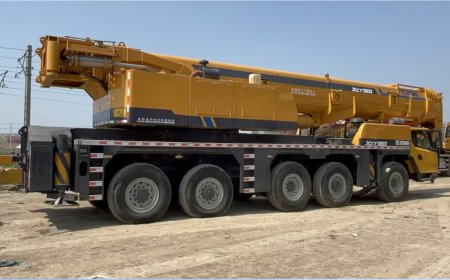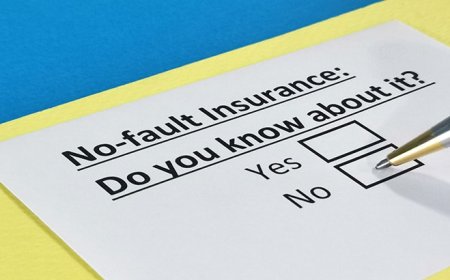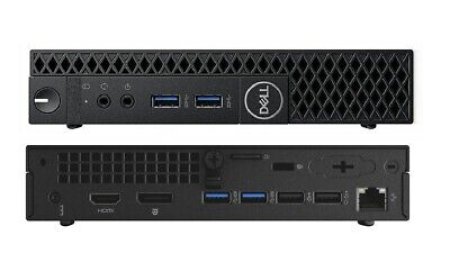How to Build a Viable Business: Key Financial Strategies?
Do you want to build a strong business? These core money steps help you start to lean, grow right, and stay in control. Read the blog to know more.

Building a business needs more than just a good idea. Your money choices from day one set the stage for growth. Many shops with great products still fail due to cash problems. They run out of funds before their sales can catch up.
Money mistakes in your first year often cause the most damage. These early slip-ups limit how far you can take your dream.
You can get working capital loans for small businesses. These short-term loans help cover daily costs while you grow. You can apply through online lenders, banks, or the SBA. Most look at your credit score and six months of bank statements. The funds can help you buy stock, pay staff, or handle sudden bills.
It helps you weather tough times that knock out weaker rivals. It gives you room to grab chances when others can't move fast. It lets you focus on making customers happy instead of just paying bills.
Make a Cash Flow Plan
You first sit down with your past bank statements. You'll quickly spot which costs stay the same each month and which ones bounce around.
You can easily plan for your fixed costs like rent and insurance. They rarely change and get deducted from your account on set dates. Your variable costs, such as supplies and marketing, need more attention. They shift based on how busy you are and market changes.
All business faces natural ups and downs throughout the year.
? Retail shops do well during holidays but struggle in January.
? Construction booms in summer but slows when snow falls.
Because of this, you should know your rhythm and save extra during good times.
Some clients will always pay late, no matter what. You can add a safety buffer of about 15% of your monthly income. This works well for most small businesses.
Your cash flow is not constant for a few reasons, like markets shifting, costs rising, and more. So, you set a reminder to review your plan every three months.
Many business owners check their cash flow weekly. They know exactly when money comes in and goes out. This habit alone puts you ahead of most new shops that close too soon.
Know Your Break-Even Point
Your break-even point shows the exact spot where sales finally cover all your costs. Before this point, you're losing money with each sale. After that, you can bag a profit in your pocket.
Many new owners chase growth without knowing this. They feel busy but wonder why their bank account stays empty. You add up all costs and divide by your profit margin. If you need to sell 50 items daily to break even, then 30 sales mean trouble. This helps you set goals and make money.
The break-even point guides your big choices about growth. Are you ready to hire help or move to a bigger shop? You can check if your sales sit well above your break-even point first. If not, maybe hold off until you have profits.
Many people set prices by just copying rivals or guessing. Your unique costs should drive your pricing choices instead. Sometimes, raising prices slightly cuts total sales but lifts overall profit. The right price helps you reach break-even faster without working harder.
Monthly check-ins will keep you honest about progress. You'll spot trends that show if you're getting stronger or need to change course when you track it over time.
Build Emergency Reserves
You should focus on building an emergency plan for your business. You can start by setting aside just 5% from each sale or payment. The goal is to have enough to cover 3-6 months of basic costs. You can cover the rent, bills, key staff pay, and must-have supplies.
You can save this in a regular savings account. However, you might not gain profits because of this. You can look into business money market accounts or short-term CDs instead. These offer better rates while keeping funds within reach.
Many shops rely too much on credit cards for daily needs. This habit can spiral into debt that eats into your profit. Your reserve fund helps break this cycle. You can pay cash for normal costs and save credit for growth chances.
Sales will drop sometimes - it happens to every business. Maybe a key client leaves, or your area faces bad weather. These bumps don't derail your whole plan with reserves ready. You pay the bill and move forward.
Smart Borrowing and Funding
You can look for loans with the lowest yearly rate you can find. You'll pay less total interest over time with short-term loans. Many owners focus only on monthly payments and miss this key point.
You can use a guarantor to get loans. The banks often say no to firms which are less than two years old. However, you can go to any direct lenders for the loans. You can get a business loan with guarantor with good credit. They sign papers saying they'll pay if your business can't. This cuts the bank's risk and boosts your chances. Some people use family members, while others team up with business friends.
Never take debt when your sales can't cover the payments. This seems like basic advice, but hope often clouds good sense. If you need 20% more sales to make payments, think twice.
Many city has small business grants that most owners never find. You can check with your local small business office or chamber. Women, vets, and minority owners often have special grant pools.
Small investor rounds can work better than big venture deals. Local angels might put in 10-50K each for a small stake. They often bring helpful tips and contacts along with their cash. You can focus first on selling enough to promise. The investors want to see that folks already buy what you make.
Conclusion
You start your journey with just what you truly need. Many top brands began in garages or spare rooms. They saved cash for things that directly helped bring in more sales. You can set aside time each month to review your numbers and spot trends. This habit alone puts you ahead of most new business owners. It helps you catch small issues before they grow into real problems.
The market shifts faster than ever these days. Your plans need room to change when new facts come to light. The best owners stay firm on their main goals but flex on how they get there. The hours spent planning your cash flow pay off many times over.























